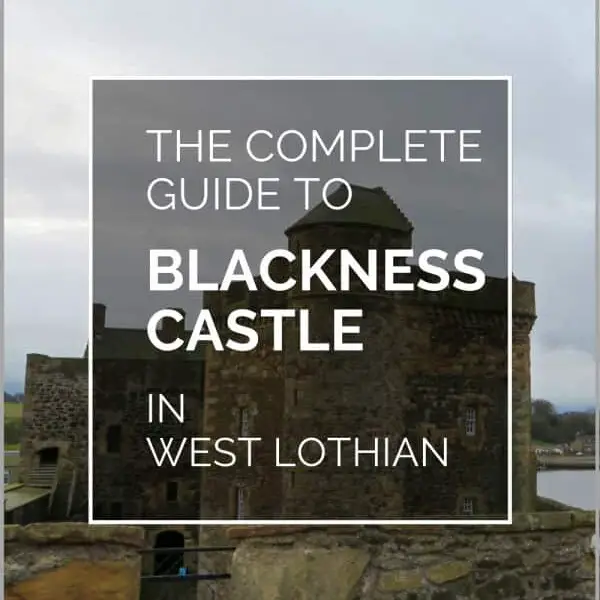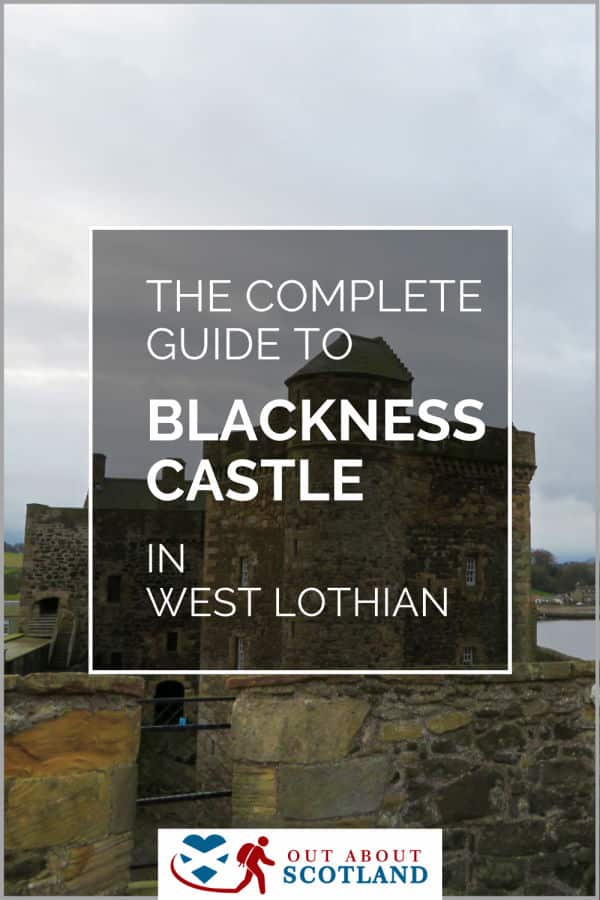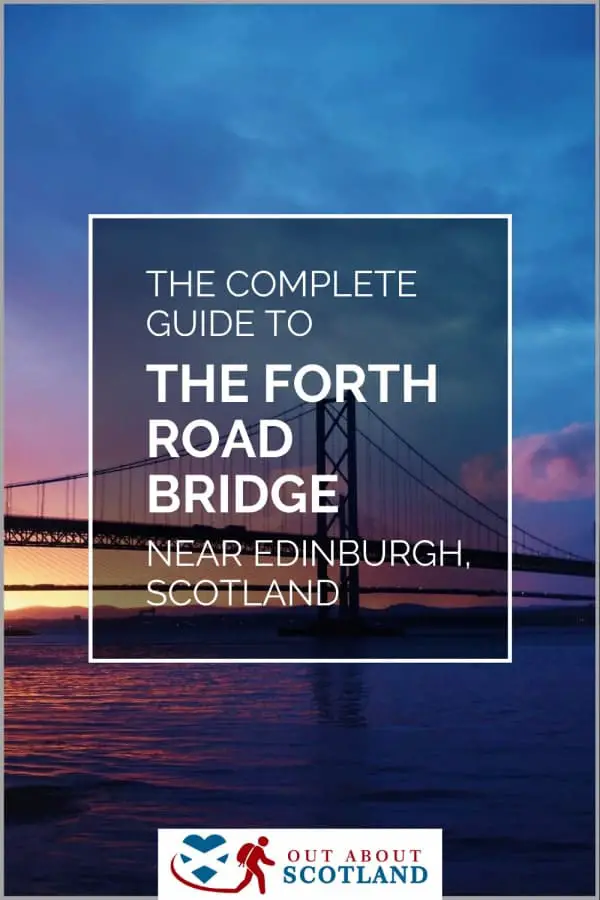Blackness Castle, often referred to as ‘the ship that never sailed’ due to its unique ship-like shape, is a fascinating historical site located on the southern shore of the Firth of Forth in West Lothian. Built in the 15th century by one of Scotland’s most powerful families, the Crichtons, Blackness Castle has served various roles, including a garrison fortress, a state prison, and an ammunition depot.
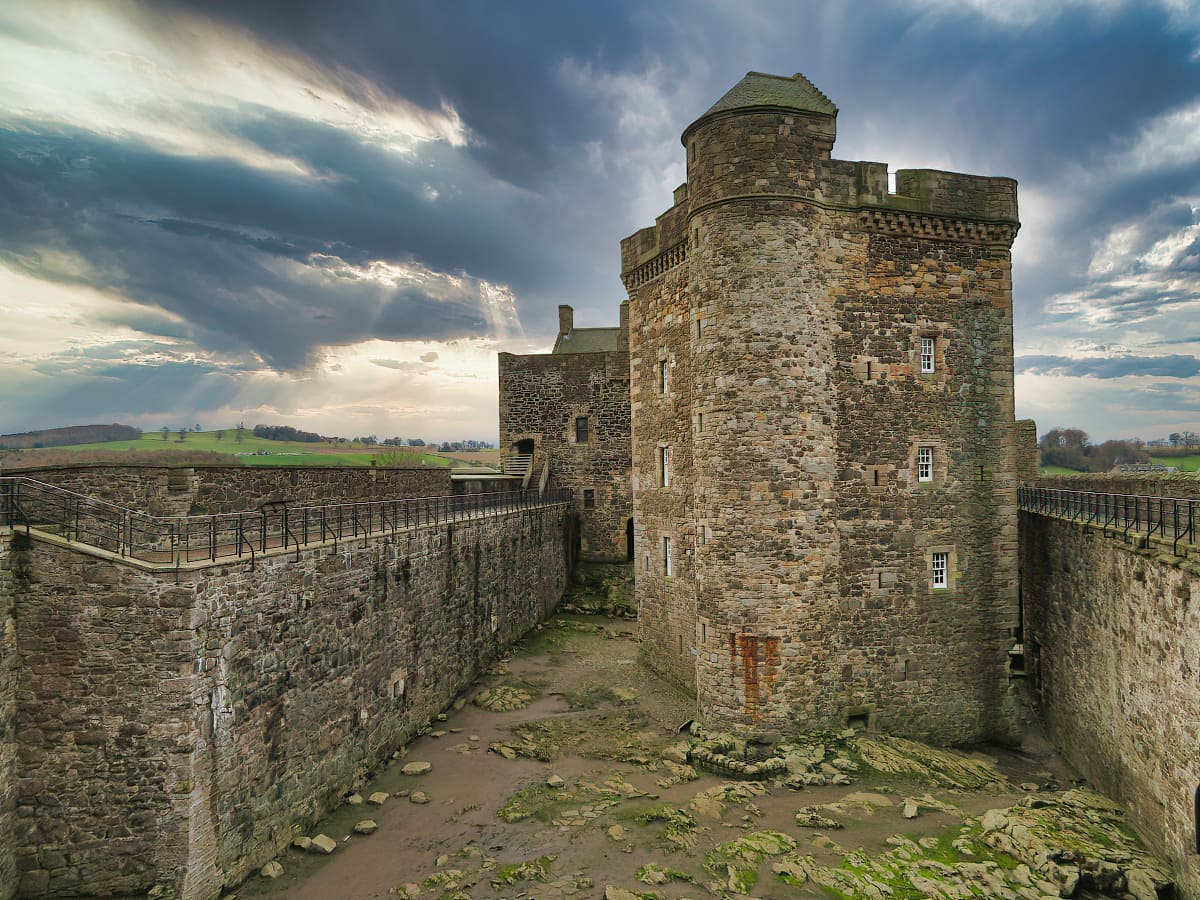
| Address: | Blackness, Linlithgow, EH49 7NH |
| Opening Hours: | 1 April to 30 September: Daily, 10 am to 5 pm Last entry at 4.15 pm 1 October to 31 March: Daily, 10 am to 4 pm Last entry at 3.15 pm |
| Admission Price: | Adult (16-64yrs) £7.00 Concession (65yrs+ and unemployed) £5.50 Child (5-15yrs) £4.00 Family (1 adult, 2 children) £14.00 Family (2 adults, 2 children) £20.00 Family (2 adults, 3 children) £24.00 |
| Parking: | Free car park on-site |
| Contact: | 01506 834 807 |
| Facilities: | Toilets, drinks machine, exhibition, shop, bike racks, picnic area, water refill |
| Photos: | Virtual Tour YouTube Video |
Overview
The Firth of Forth is an expansive estuary in the south-east of Scotland that runs 55 miles inland from the North Sea, with its vast mouth between Edinburgh and Fife linked by the three Forth Bridges.
The estuary stretches into the heart of Scotland, so capturing it would have given invading armies a major advantage, which is one of the reasons why the powerful Crichton family built the heavily defended fortress of Blackness Castle between the Royal Palaces at Linlithgow and Edinburgh over 600 years ago.
It would have been almost impossible to siege the castle back in the 1400s as the enormous defensive walls are nearly impregnable. Stand in the courtyard and you’ll see huge walls looming overhead that are up to 5 metres (16 feet) thick in places.
The castle’s unusual pointed shape led to it gaining the nickname ‘the ship that never sailed’ due to the curtain walls nearest the Forth that look like a ship when viewed from a distance, and even the large tower inside is called ‘the mainmast’.
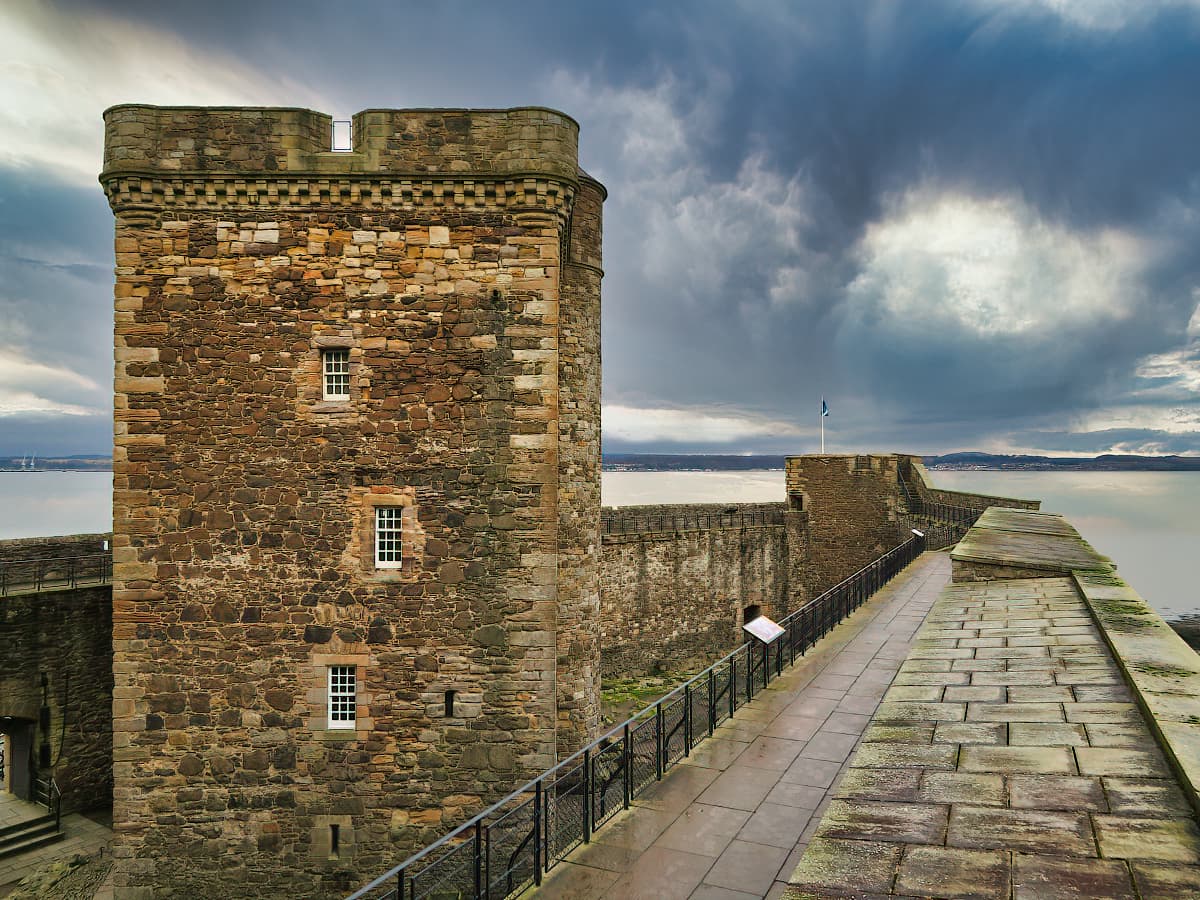
The castle experienced more than its fair share of combat over the centuries, withstanding blockades and sieges until the end of Mary Queen of Scots’ rule, when Oliver Cromwell’s forces left it almost completely in ruins during the War of the Three Kingdoms in 1650.
However, while many castles in this era were abandoned, Blackness Castle was fully repaired and even expanded following the restoration of Charles II to the throne, and the following 200 years saw its return to glory both as a prison and as an ammunition depot. This later function led to new garrison buildings being built on two sides of the castle with a large courtyard in the middle, and it continued to serve the British Army until WWI.
As with most of Scotland’s castles, it was eventually abandoned and handed over to the Ministry of Works at the end of the First World War before passing into the care of Historic Environment Scotland (HES), which today maintains the site as a historic tourist attraction.
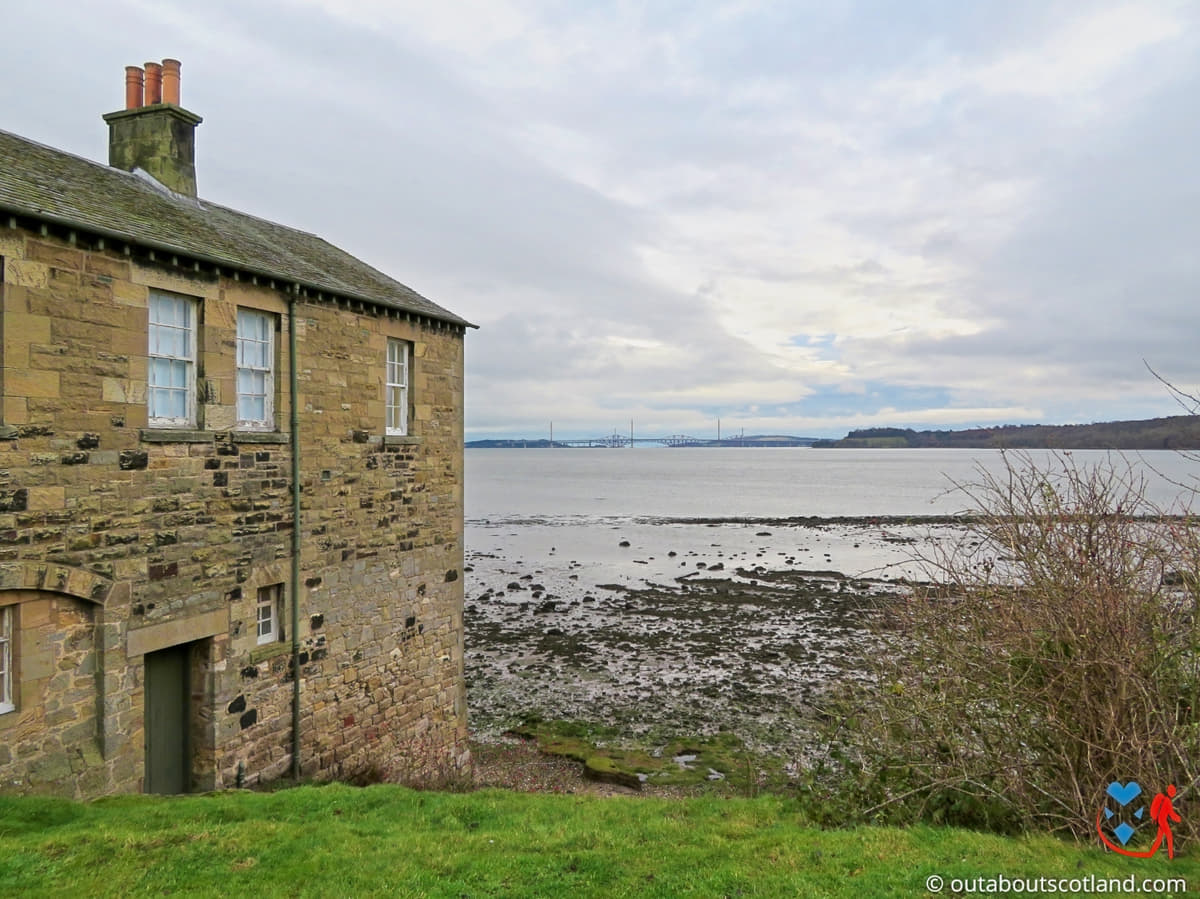
The Highlights
1: Visitors to Blackness Castle can access certain areas of the ramparts to enjoy the panoramic views of the Firth of Forth and the surrounding landscape. Walking along the castle walls and climbing the towers offers visitors a chance to see the scenic vistas of the Fife coastline and beyond.
2: Blackness Castle has gained popularity as a filming location for movies and TV shows, most notably for its role as the stand-in for Fort William in the hit series ‘Outlander’, making a visit a must-do for fans of the show.
3: Positioned on the edge of the Firth of Forth, the castle offers stunning panoramic views across the estuary, including the iconic Forth bridges. It is a great spot for birdwatching as the surrounding nature reserve is home to a variety of seabirds.
Visiting Tips
1: The weather in Scotland can be unpredictable, with often high chances of rain and wind, especially in a coastal area like where Blackness Castle is situated. It’s advisable to take wet weather gear no matter the time of year.
2: During the off-season or due to special events, the castle’s hours of operation may change. Planning ahead ensures you won’t be disappointed if the castle has altered schedules or is closed on the day you wish to visit. See the official website here.
3: With its stunning location on the Firth of Forth, Blackness Castle offers great opportunities for birdwatching and photography. Binoculars (link to binocular reviews) will enhance your experience if you’re interested in the local wildlife.
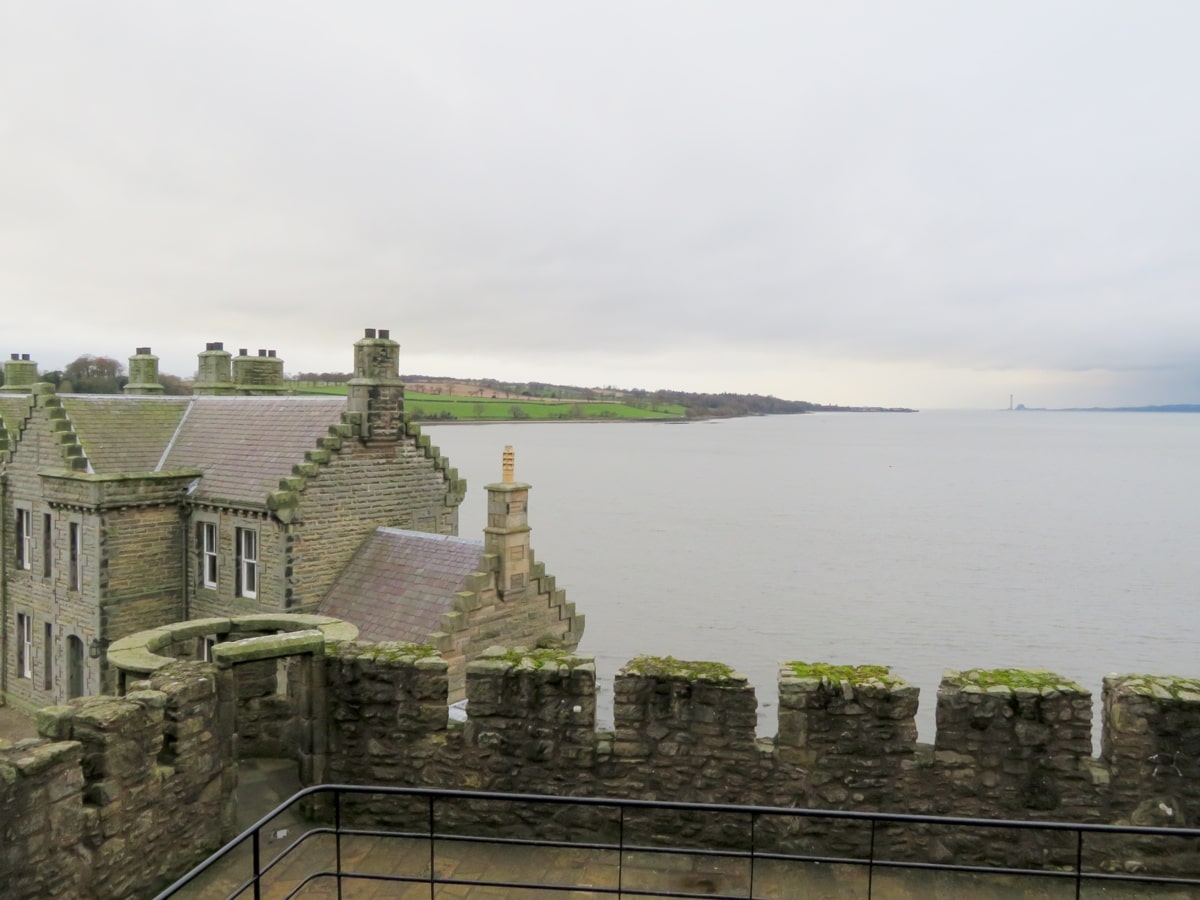
Tourist Information
This is a great castle to visit, whatever time of year it is, as you can easily visit both Edinburgh and Blackness Castle in the same day, but it’s also close to Linlithgow, so you could (in a pinch) also fit in a visit to the former royal palace as well.
My advice before entering the castle is to climb the hill towards the back of the main gate and take a good look at the panoramic views. To the west is the Forth winding its way inland; to the north are the fields and hills of Fife; and to the east lies Edinburgh, with the famous Forth Bridges dominating the horizon.
A wide, sweeping bay lies to the south, ringed by woodlands and the John Muir Way walking trail, which circles around this section of coastline on its way to South Queensferry and Bo’ness. This stunning location is the perfect setting for a majestic castle, and the Scheduled Ancient Monument of Blackness Castle doesn’t disappoint.
If you’re visiting by car, you’ll find a small car park in Blackness Village a couple of hundred yards away, but there’s a much more accessible parking area next to the castle’s ticket office – but be aware that it’s usually full in the summer unless you get there early.
The HES office is located in the old garrison building where you’ll find a small gift shop along with toilets, but I feel they’ve missed an opportunity by not opening up the rest of the building to tourists. Likewise, the old officer’s building opposite is off-limits as well.
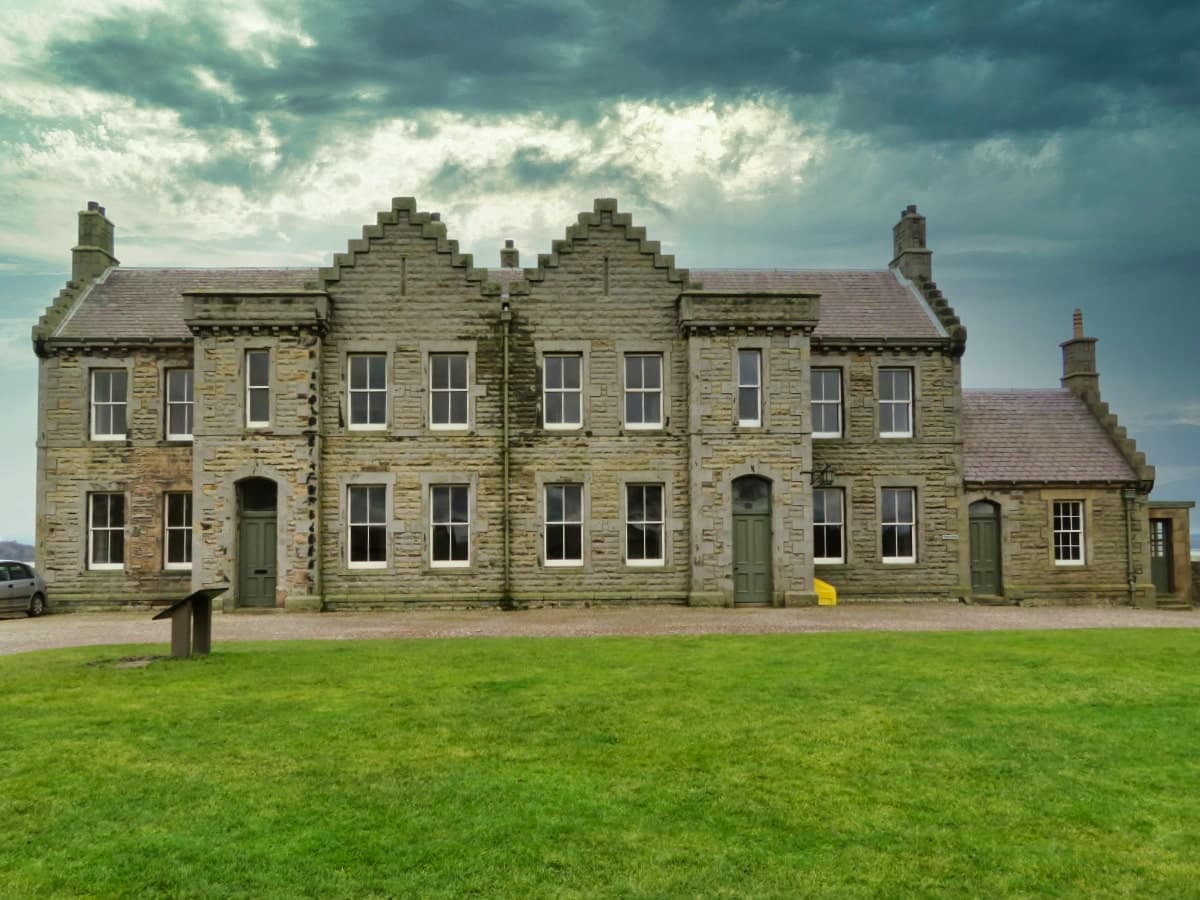
The castle entrance is a short distance away on the other side of the courtyard, but before heading inside, I recommend you take a wander down to the area next to the outer walls. You’ll find a great viewpoint of the Firth of Forth, and there are picnic benches if you fancy a packed lunch with a picturesque waterside view.
Once inside the castle walls, you’ll find most of the castle open to explore, from the outer walls with their elevated walkways to the defensive towers and their rooftop lookout posts. The outer walls lead out from the entrance to the tower that forms the ‘bow’ of the ‘ship that never sailed’, and from there you can climb to the lookout post to admire the view before descending into the gloomy prison.
Following the walkway from the prison leads you to the east side of the castle where you’ll head inside the fortress to explore the many rooms that were the residential quarters of the Crichton family.
There’s not a huge amount to do inside this part of the castle, to be honest, but HES frequently stages exhibitions in there, so it might be worth checking their website before leaving home to see what’s on. If no exhibitions are being held, you’ll spend no more than half an hour in the inner buildings before stepping into the inner courtyard, where you’ll find the main tower.
The highlight of this part of the castle is taking the winding staircase to the top and looking out over the Forth from the upper ramparts. It’s a stunning view, and it’s a great place to look at the mudflats on the eastern side of the castle which are a Site of Special Scientific Interest. There are lots of birds living in this small area, so I recommend taking your binoculars or a camera with a decent zoom.
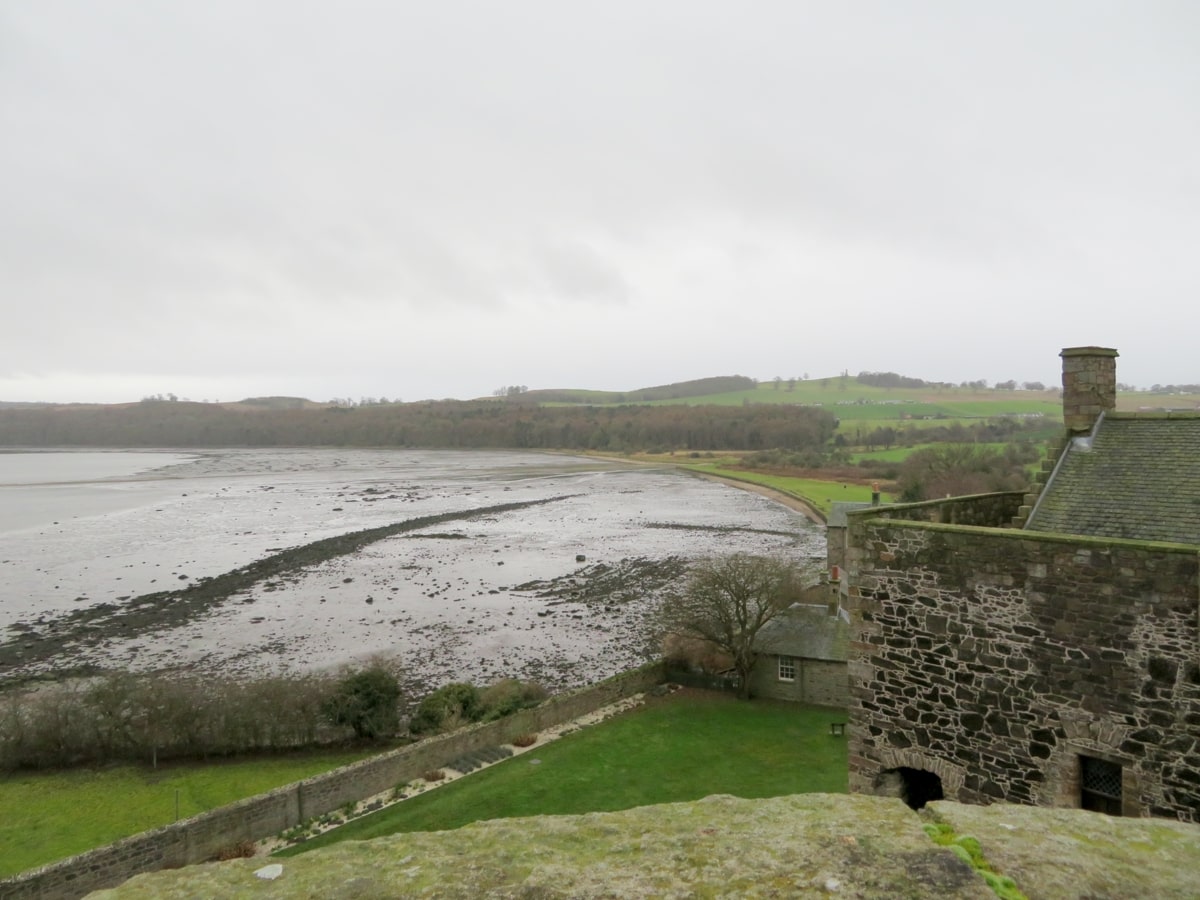
Things to Do
Discover History: Delve into the rich history of Blackness Castle on a self-guided tour. As one of Scotland’s most impressive fortresses, its intriguing past as a royal castle, prison, and ammunition depot is well worth investigating for any budding amateur historian.
Photography Challenge: With its dramatic coastal location and imposing walls, Blackness Castle is a great location to practice your photography skills. Challenge yourself to capture its stark beauty in different lighting and weather conditions, perhaps using the Firth of Forth and the Forth Bridges as backdrops.
Bird Watching: Blackness Castle is located on the edge of the Firth of Forth, an estuary that’s a hotbed for seabirds. Bring your binoculars (link to binocular reviews) and watch the various birds that inhabit this area. There’s a chance you’ll spot everything from waders and gulls to terns and possibly even puffins.
Picnic with a View: Pack a picnic and enjoy it on the castle grounds with the backdrop of the expansive Forth River. The grassy areas near the rear of the castle have picnic benches which offer a lovely setting for an outdoor lunch.
Castle Sketching: If you have an artistic streak, bring along your sketchpad and capture the castle’s unique design. Its ‘ship that never sailed’ shape, with a pointed ‘bow’ sticking out into the sea, makes for a unique subject.
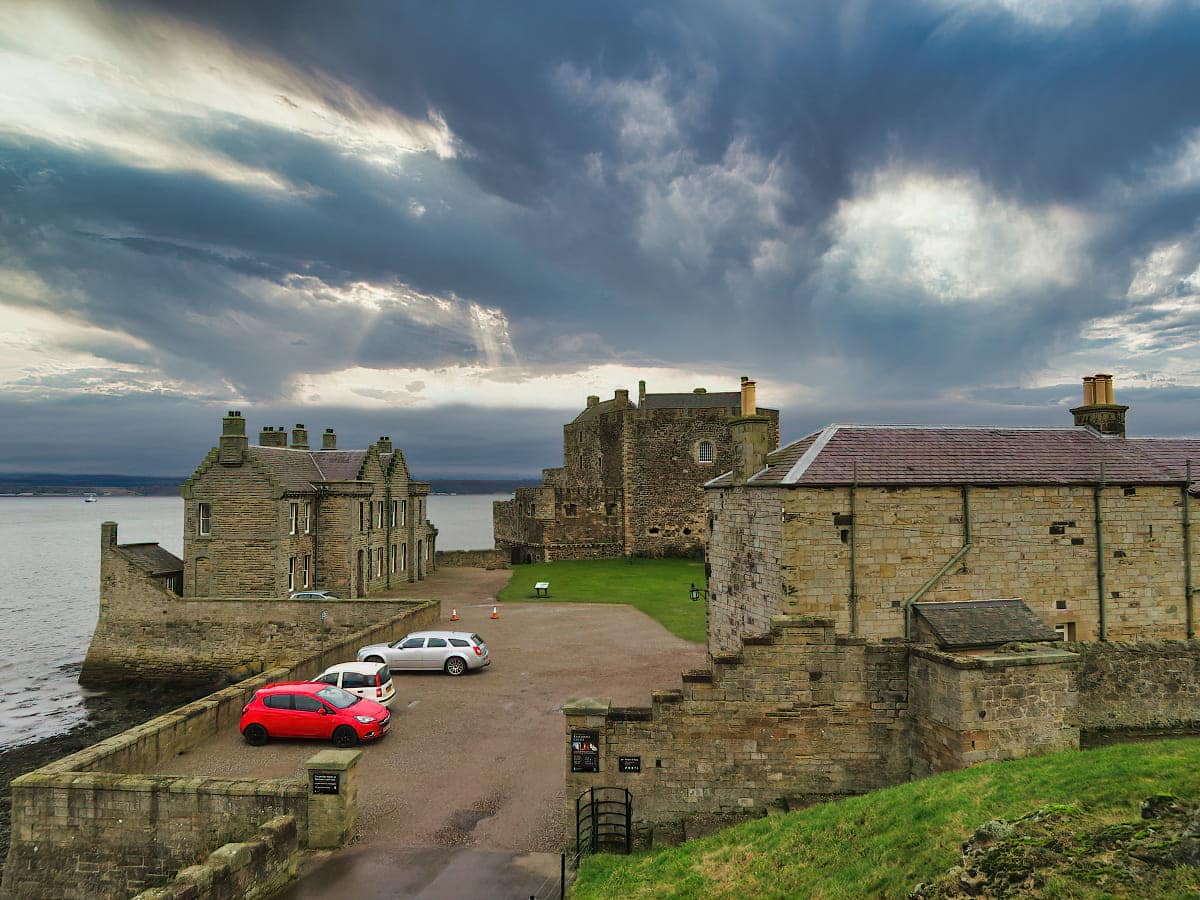
Things to Do Nearby
Linlithgow Palace. Kirkgate, Linlithgow EH49 7AL. 12-minute drive.
A large castle that overlooks Linlithgow Loch. The palace was the royal stop-over point for royalty travelling between Edinburgh and Glasgow for hundreds of years. Today it is mostly in ruins but is open to the public for self-guided tours. There is a gift shop on site and there is no fee to visit the surrounding grounds.
Hopetoun House. Queensferry, South Queensferry, EH30 9RW, 25-minute drive.
17th-century manor house that is one of the largest in Scotland. The house is privately run and is open for guided tours, with extensive grounds offering lots of walking opportunities. Midhope Castle, the setting for the TV series Outlander, can be found elsewhere on the estate.
Linlithgow Museum. 93 High St, Linlithgow EH49 7EZ. 4-minute walk.
A volunteer-run museum that explores the royal history of Linlithgow and the people who lived in the town over the centuries.
House of The Binns. Binns View, Linlithgow EH49 7NA. 10-minute drive.
Grand 17th-century manor house set in magnificent grounds. The house is open to the public for tours which show the original portraits, furniture and porcelain of the Dalyell family. There are also woodland walks throughout the grounds.
Kinneil Museum. Duchess Anne Cottages, Bo’ness EH51 0PR. 11-minute drive.
This museum is situated inside the 17th-century Kinneil House. The ground floor has an exhibition about Bo’ness town and the upper floor features a gallery.
Frequently Asked Questions
Did they use Blackness Castle in Outlander?
Blackness Castle was used as a film set to portray Fort William in the TV series Outlander.
Why is Blackness Castle shaped like a ship?
The design of Blackness Castle stems from its location on the banks of the Firth of Forth. Because the front of the castle projects onto the water it would have been susceptible to cannon fire from attacking ships.
The angled ‘bow’ was designed to deflect cannonballs so that they would bounce off without causing much damage.
Can you go inside Blackness Castle?
Historic Environment Scotland is in charge of maintaining Blackness Castle, which is accessible to the general public for self-guided tours. There is a fee for entry to this castle. Visit the HES opening times page for the current opening times.
Who built Blackness Castle?
In the 1440s, Sir George Crichton built Blackness Castle.

